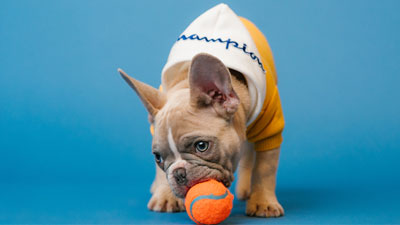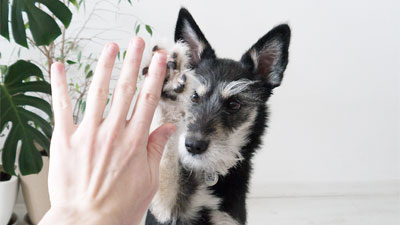- Size
- Smallest
- Small
- Small to Medium
- Medium
- Large
- Giant
- Characteristics
- Smartest
- Hypoallergenic
- Fluffy
- Best Guard
- Best Family
- Best for Kids
- Low Shedding
- Healthiest
- Police Dogs
- Most Calm
- Quietest
- Color
- White
- Black
- Grey
- Brown
- Blue
- Red
- Coat
- Hairless
- Short
- Long
- Origin
- Japan
- China
- Australia
- Germany
- Italy
- United States
- France
- Group
- Hound
- Terrier
- Herding
- Toy
- Working
- Sporting
How Do You Teach A Stubborn Dog To Fetch?

Photo by IgorTheGoodBoy on IG on Unsplash
The image of a dog eagerly retrieving a thrown ball is a classic depiction of the human-canine bond. However, not all dogs readily embrace the concept of fetch. For those with stubborn canine companions, the journey to teach fetch might require a bit more patience and creativity. In this comprehensive guide, we explore effective strategies to teach fetch to stubborn dogs, turning what might seem like an uphill battle into an enjoyable bonding experience.
Understanding Stubbornness in Dogs
Stubbornness in dogs often stems from a combination of factors, including breed traits, individual personality, and previous experiences. Some dogs may be independent thinkers, while others might be more focused on their own agenda. Understanding the root of stubborn behavior is crucial in tailoring your approach to teach fetch effectively.
Step 1: Assess Your Dog's Personality
Before embarking on fetch training, take the time to understand your dog's unique personality traits. Some dogs are naturally more headstrong, requiring a different approach to training. Consider factors such as breed tendencies, age, and past experiences to tailor your strategy to your dog's individual needs.
Step 2: Identify Motivating Factors
Stubborn dogs often have specific motivators that can be used to your advantage during training. These motivators can include treats, toys, praise, or even a favorite game. Understanding what captures your dog's interest is essential in making the fetch training process more engaging for them.
Step 3: Create a Positive Association with Fetch
For a stubborn dog, the idea of fetch might not initially be appealing. Begin by creating a positive association with the fetch activity. Use treats, praise, and affection to reinforce positive behavior. Allow your dog to interact with the fetch toy at their own pace before diving into training sessions.
Step 4: Start with Short Play Sessions
Stubborn dogs may become disinterested or resistant to prolonged training sessions. Begin with short, fun play sessions to capture their attention and maintain their enthusiasm. Keep the initial sessions light-hearted and enjoyable to build a positive connection with the fetch game.
Step 5: Use High-Value Rewards
Incorporate high-value rewards to pique your dog's interest in fetch. Experiment with different treats or toys to find what truly excites them. Offering a reward that your dog finds irresistible can significantly increase their motivation to engage in the fetch activity.
Step 6: Gradual Introduction of Fetch Commands
Once your dog is comfortable with the fetch toy, start introducing basic commands such as "fetch" and "bring it back." Use a cheerful tone and maintain a positive demeanor to keep the atmosphere enjoyable. Avoid sounding authoritative, as this may trigger resistance in stubborn dogs.
Step 7: Be Patient and Persistent
Patience is key when dealing with a stubborn dog. If your dog doesn't immediately grasp the concept of fetch, avoid expressing frustration. Consistent, persistent efforts over time will yield better results than sporadic, forceful attempts. Celebrate small successes and build upon them gradually.
Step 8: Leverage Playfulness
Make fetch training a playful and interactive experience. Incorporate elements of your dog's favorite games into the fetch routine. Whether it's a game of tug-of-war or a brief chase, integrating familiar elements can make fetch more appealing to a stubborn dog.
Step 9: Use Fetch as a Transition Activity
Incorporate fetch into your dog's daily routine as a transition activity. For example, before mealtime or a walk, engage in a short fetch session. Associating fetch with positive events can enhance its appeal for stubborn dogs.
Step 10: Break Down the Training Process
For stubborn dogs, breaking down the fetch training process into smaller, manageable steps can be effective. Focus on one aspect at a time, such as holding the toy, then introducing short distances for retrieval. Gradually build upon each successful step.
Step 11: Consistency Is Key
Consistency is crucial in training any dog, especially those deemed stubborn. Establish a regular schedule for fetch training sessions, and maintain a consistent approach in your commands and rewards. Dogs thrive on routine, and a predictable training environment can enhance their learning experience.
Step 12: Seek Professional Assistance if Needed
If despite your best efforts, your dog continues to resist fetch training, seeking guidance from a professional dog trainer or behaviorist can be beneficial. A trained expert can assess your dog's specific challenges and tailor a training plan to address stubborn behavior effectively.
Common Challenges and Solutions
Lack of Interest:
Solution: Experiment with different fetch toys and rewards to identify what captures your dog's attention. Adjust your approach based on their preferences.
Refusal to Bring the Toy Back:
Solution: Teach the "drop it" command using positive reinforcement. Reward your dog for releasing the toy willingly, making the return part of fetch a positive experience.
Easily Distracted:
Solution: Start training in a quiet environment and gradually introduce distractions. Use high-value rewards to maintain your dog's focus during fetch sessions.
Impatience:
Solution: Keep training sessions short, positive, and enjoyable to prevent frustration for both you and your dog. Celebrate small successes and build upon them gradually.
Conclusion
Teaching fetch to a stubborn dog requires a combination of patience, understanding, and a tailored approach. By acknowledging your dog's individuality, identifying motivating factors, and incorporating positive reinforcement, you can transform fetch from a challenging task into a rewarding bonding experience. Remember, every dog learns at its own pace, and the key is to create an environment where your stubborn companion feels encouraged, engaged, and ultimately excited to participate in the delightful game of fetch.
You May Also Like
 Dog BehaviorDo Dogs Learn Fetch Naturally?
Dog BehaviorDo Dogs Learn Fetch Naturally? Dog BehaviorWhat Age Do Dogs Learn Fetch?
Dog BehaviorWhat Age Do Dogs Learn Fetch? Dog Training Tips5 Easy Steps: How To Teach Your Puppy To Fetch
Dog Training Tips5 Easy Steps: How To Teach Your Puppy To Fetch Dog Training TipsThe Place Command: Teach Your Dog to Go to Their Place
Dog Training TipsThe Place Command: Teach Your Dog to Go to Their Place Dog Training TipsDog Tricks: Teach Your Dog to High Five
Dog Training TipsDog Tricks: Teach Your Dog to High Five Dog Training Tips How to Teach a Dog to Come When Called: The Recall Command Guide
Dog Training Tips How to Teach a Dog to Come When Called: The Recall Command Guide